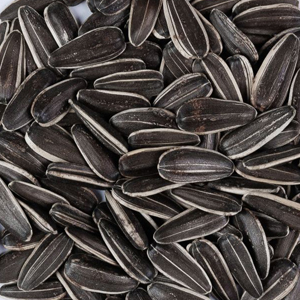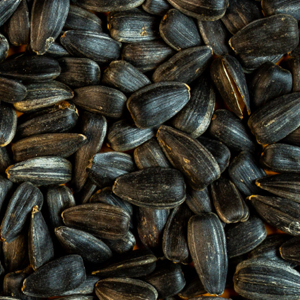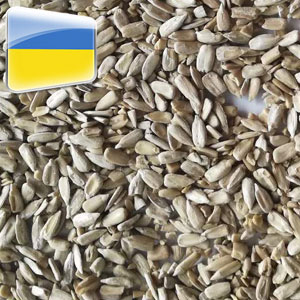Sunflower seeds
Our company sells oil, fodder and culinary sunflower seeds in large and small quantities. Delivery is made to European countries and around the world. Sunflower seeds are packed in sacks, Big Bags, shipped in bulk and delivery is by road, rail and sea. On the product pages you can find out the current prices for sunflower seeds and send an inquiry for more details on the payment terms and the delivery of sunflower seeds. You also have the option of using WhatsApp Messenger.
Shows all 8 results
-
New!

Iregi Sunflower seeds
500,00 € /Ton
-

Black sunflower seeds for oil production
400,00 € /Ton
-

Peeled sunflower seeds
Call for Price
-

Sunflower seeds
750,00 € /Ton
-
Sale!

Iregi Sunflower seeds
Original price was: €750,00630,00 €Current price is: €630,00. /Ton
-

Sunflower Seeds Black
320,00 € /Ton
-

Sunflower seeds (Bakery)
750,00 € /Ton
-
Sale!

Black sunflower seeds
Original price was: €595,00399,00 €Current price is: €399,00. /Ton
All about sunflowers
Properties of sunflowers
Sunflower belongs to the aster family. The plant came to Europe from North America in the 14th century. But in many European countries it feels good and shows a high yield.
The flower consists of a multitude of triangular stone seeds wrapped in a black leathery shell containing a light colored core. All foods from sunflowers are made from it. Most of the time, of course, it's butter. Surprisingly, the number of seeds in the sunflower corresponds to the Fibonacci sequence. This means that the number of seeds in each next row of grains, starting from the middle, is equal to the sum of the seeds in the previous two rows. Likewise, the cells are found on pineapple fruits and pine cones.
The benefits of sunflower seeds lie in their chemical Zusacommendation. And in terms of the content of some substances necessary for the body, it is difficult to be equal. Eating 100 grams of fried sunflower seeds provides a daily norm of thiamine (B1), 20% of the norm of riboflavin (B2) and pantothenic acid (B5), 64% of the required pyridoxine (B6) and half the daily norm of folic acid (B9 ).
B vitamins are supplemented by a large amount of tocopherol. 50 grams of sunflower seeds are enough to meet the daily norm of its consumption. Tocopherol or vitamin E is incredibly important for the body as it is an important antioxidant. Such substances prevent the development of cancer and support the youth of tissues, slowing down the aging process.
The Mineralzusacomposition of sunflower seeds is not very diverse, but very saturated. 100 grams of sunflower seeds contain 81-82% of the required amount of magnesium and phosphorus, 97% of the norm of selenium and copper, about 100% of the required volume of manganese and 180% of copper. Calcium (7,8%), iron (29%), and potassium (26%) levels are relatively low, but are well replenished with other common foods. And by the amount of zinc, sunflower seeds have practically no alternatives - 42%.
A broad beneficial effect on the body has a vitamin B1-B9 complex, in combination with vitamins E and PP (nicotinic acid). A sufficient amount of these substances is necessary for effective metabolism, the conversion of fatty acids and high-quality lipid metabolism. A lack of B vitamins is usually the cause of many cosmetic problems. Deficiency worsens the condition of hair, skin, nails, makes them brittle, dry and fragile. ZusaTogether with sunflower seeds and oil, vitamins work to prevent such disorders.
Thanks to the large amount of magnesium, regular intake of sunflower seeds promotes calming, balancing of the nervous system, building neural connections and impulses in the body. A stably functioning nervous system mitigates the consequences of stress, illness and other negative events.
In the absence of conflicts of the body with other components, sunflower seeds can be very useful for copper deficiency in the body. The trace element is responsible for the production of hemoglobin and is therefore needed to prevent and treat anemia. Copper also needs healthy skin, as the element promotes the synthesis of natural collagen, thereby correcting wrinkles.
Dietary fiber, which is present in large quantities in sunflower seeds, also has a positive effect on the body. Low-fat, non-digestible fiber moves through the intestines and collects food debris. This involves a gentle massage of the walls of the digestive organs, which increases blood flow.
The beneficial effect of sunflower seeds on the digestive tract is also expressed in the passage of many antiseptic substances: flavonoids, organic acids, minerals, etc. This preserves and restores a healthy microflora. It is not for nothing that the sunflower is considered an excellent anthelmintic plant. Sunflower seeds also have this property, although the oil is much more effective with targeted helminth application.
plantsbiologic
The stem grows up to 3 m tall, straight, covered with stiff hairs. The leaves are oval heart-shaped, dark green up to 40 cm long, covered with stiff, short, hairy hairs.
Flowers with large diameters of 30-50 cm, turning towards the sun during the day (only in young plants). The petals are tongued, orange-yellow, 4-7 cm long; inside – brown-yellow, tubular, numerous – from 500 to 3000 pieces. Inside the flower are 4 stamens with fused anthers. They form a flower on a stem, but meet additional, small shoots.
The sunflower blooms for 30 days in August. The fruits are seeded, slightly compressed, loosely 8-15 mm long and 4-8 mm wide. Can be white, grey, black or striped with a leathery fruiting body.
The sunflower is collected using special devices - harvesters. It grows in rows spaced 40-50cm apart. Harvesting requires care and experience - if you don't get in a row, the stalk will simply break and the harvest will decrease.
The main thing in sunflowers are seeds. For them, this very fruitful plant is grown. A whole flower grows from one seed, containing about 3 thousand of the same seeds. Sunflower seeds are eaten raw, fried, oil is obtained from them, which is called - sunflowers. Today, agricultural culture is very common. By that time, they have already released many varieties of sunflowers, differing in their oil content and the size of baskets (flowers).
types of sunflowers
Sunflower is a very common culture around the world. About 60 varieties of the plant have been bred by breeders. A wild sunflower has small seeds. And the seeds of the common sunflower are divided into two categories:
- for carnival production;
- for the confectionery industry;
There are three main types of oil of varying quality depending on the amount of linoleic, oleic and saturated acids:
- Sunflower monounsaturated or high oleic acid – it contains 82% oleic acid, which affects the quick digestibility of the oil without disturbing cholesterol levels.
- Polyunsaturated or ordinary sunflower — it is recommended to use seeds in a diet, since the content of oleic acid is only 25-30%, linoleic acid is 65%, and saturated acids are 10-11%.
- Sunflowers with an average oil content - this variety is still under development and was only used in the USA registered.
Technology for growing sunflowers
The cultivation of sunflower has great profitability for both large farms and small domestic areas. In the first case, you will get a profitable and effective business, and in the second - you will get a household with oil, seeds, livestock bait.
Among the oil crops, the sunflower ranks only fourth in the world in terms of the product produced. In 2013, according to the United Nations, Ukraine (1,105 million tons) and Russia (0,984 million tons) were the world leaders in the production of sunflower seeds. In third place, Argentina produced three times less - 310 thousand tons. Data on the production of sunflower oil are similar - Ukraine and Russia are leaders. Even 27 EU countries do not exceed the Russian values in total – 3140 against 3570 (thousand tons).
Sunflowers can grow confidently both in large plantations and in single specimens in the middle of an ordinary bed. The main thing for him is a suitable soil in the Zusacomposition / structure and the lack of unfavorable predecessors. These include peas, canola, beans, sugar beet, perennial herbs. The sunflower grows best after corn, wheat, potatoes. The sunflower itself should be returned to its original place of cultivation only after 5-6 years.
Sunflowers have a strong root system that can grow up to 4 meters deep and up to 1 meter on the sides. The plot should be well lit by the sun and protected from strong winds. A growing medium with an average acidity is desirable. Black earth and sandy loam are well suited. Heavy clay and salty soil will not allow the sunflower to grow.
Sunflower sowing is carried out in May-June, when the earth warms up +10-+12 5 cm deep. The seeds are first briefly kept in an aqueous solution of potassium permanganate with a growth stimulant, and then sent to the ground 5-8 centimeters deep. Fertilizers and mineral fertilizers should be introduced in the previous autumn, and it is recommended to add 20-25 g of ammonium nitrate to the nests, as well as 20 g of superphosphate for each linear meter.
The first shoots will please their appearance in a week and a half to two weeks, but with a deep sealing of the seed material, germination can be delayed for 3-3,5 weeks. For a set of green mass, refilling with saltpetre is allowed, and after the appearance of the third pair of leaves, shallow loosening is allowed, stopping when the plant reaches growth in 60-70 cm.
Sunflowers need infrequent but plentiful watering. Since it actively draws minerals from the soil, after the third pair of leaves it needs to be fed with superphosphate at the rate of 20-40 g per square meter. After the formation of baskets, it is necessary to introduce nitrogen and potassium into the soil with diluted potassium sulfate (1 tbsp per 10 l of water) and infusion of mullein (1: 10). Potassium sulfate is reintroduced as the plant enters the seeding phase.
When the flower head of the plant stops reaching the sun but always remains facing east, harvest time arrives. The seeds themselves at this time harden and darken, and the foliage withers. First, the baskets are removed and sent to dry, then the seeds are knocked out from them and sent to dry.
Raw sunflower seed is poorly stored due to its own clogging, moisture and ability to self-heat (and this happens faster than barley and wheat). First, the chemical Z changesusaConversion of fats, then – proteins, and finally the useful properties of the seeds can be lost altogether. As a rule, the uneven ripeness of the product has the worst effect on the type of storage. The rise in temperature also contributes to the development of mold and the proliferation of microorganisms.
Fresh sunflower seeds should be stored at a humidity of up to 7% and a temperature of up to +10 °C. For high-quality long-term storage, the product also needs to be cleaned and dried. Sunflowers with a humidity of 11%-13% can be stored in +2 °C - +10 °C. At higher humidity, it is cleaned of impurities and spoiled seeds, after which it is cooled. Weed contaminants should not be more than 2%.
In such conditions, the useful properties of the product will remain for 3-6 months after collection. The storage room must be dry and disinfected. Sunflowers are stored in bags on pallets or in bulk if the warehouse is appropriately equipped.
sunflower products
Olive oil
Sunflower's largest market segment is oil extraction. Furthermore, the oil is used in the food industry or as an ingredient in the manufacture of semi-finished or finished products; or it is bottled as a finished product.
Sunflower oil can be further segmented as a commodity traded in bulk at low prices; and specialty oils traded in smaller quantities at high prices; such as premium and certified products, ecological and ecological. Sunflower oil is obtained through three different methods; Cold press, hot press and refined sunflower oil.
There is a small but growing number of artisanal processors who produce oil by cold pressing; Oil is sold as a high value product, often as an "organic" product and e.gusammen with other oils and flour. The food industry prefers sunflower oil with high oleic acid content, since such an oil is more stable and useful. Oils with a high linoleic acid content are preferred by manufacturers of technical oils such as paint, fuel or cosmetics.
The demand for sunflower oil is increasing every year, mainly due to increasing health awareness and appreciation of the benefits of sunflower oil. Sunflower oil is rich in vitamins A and E, linoleic and monounsaturated fats that help control cholesterol levels.
In addition, kale sunflower is higher in oleic acid, and food manufacturers are turning to using kale oil as a substitute for unhealthy trans fats. Sunflower oil is light in color and has a neutral taste - it is a good general purpose oil as it can withstand high cooking temperatures. Sunflower seed oil is one of the most useful vegetable oils available for cooking.
Grist
The grist that remains after oil extraction is a rich source of protein and excellent feed for animals, especially ruminants. Compared to soy, sunflower flour contains less energy and the amino acid lysine, but more fiber and methionine.
A separated seed coat or husk is high in fiber and low in protein, has low commercial feed value, and is therefore often burned as a heat source for milling. For every 100 kilograms of crushed sunflower seeds, the processor receives around 40 kilograms of oil, 35 kilograms of protein-rich flour and 25 kilograms offal.
candy sunflower
Sunflower seeds can be consumed directly or with minimal processing and are called confectionery flowers. While sunflower oil and grist are made from the same varieties of sunflower, the sweet sunflower has its own properties for specific purposes. Typically, confectionery is more oilseed, with a lower percentage of oil, and is divided into three categories for its intended purpose:
- Unpeeled Sunflower. These seeds are larger, more than 1,2/XNUMX inch (XNUMX cm) in length, with a core that accounts for half of the total weight, and a heavy black and white striped or black shell (there are white seeds on the market too) that are sold unpeeled as snacks becomes. Most are sold roasted, sometimes seasoned with salt; Now flavors like grill, sour cream, and onion are also used.
- sunflower seed. These are medium-sized seeds that are mechanically broken down, with the core used either as a snack or as a food ingredient in baked goods. The kernel is commonly used in healthy foods and snacks, can be added to salads, eaten straight, or ground to a flour consistency and used as an alternative to gluten-free flour; that contains carbohydrates and contains no nuts.
- birdseed. The seeds are smaller, which is used for feeding birds or for pet food. The global bird seed market can be divided into caged birds, wild birds, pigeons (particularly racing pigeons) and an emerging market – growing for hunting or creating a habitat for wild animals.
